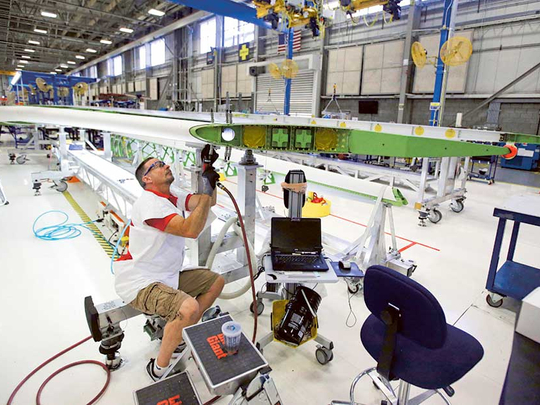
Washington: US manufacturers expanded at their slowest pace in two years last month, held back by faltering global growth and cutbacks in oil and gas drilling.
The Institute for Supply Management said Thursday that its index of factory activity fell sharply to 50.2 in September from 51.1 in August. That is the lowest level since May 2013. Any reading above 50 indicates expansion.
New orders and production both fell sharply and a measure of hiring also declined, according to the ISM, a trade group of purchasing managers. All three measures still barely remained in expansion territory.
US manufacturers are getting hit by slower growth in China, the world’s second-largest economy, and a stronger dollar, which makes US goods more expensive overseas. The 15 per cent rise in the dollar’s value in the past year has also made imports cheaper compared with US-made goods. Oil and gas drillers are also cutting back on their orders for steel pipe and other equipment in the wake of sharply lower oil prices.
The report “is yet another illustration of the devastating impact that the strong dollar and weak foreign demand is having on the battered factory sector,” Steve Murphy, an economist at Capital Economics, said. “Things might well get even worse before they begin to get better. Nevertheless, the ... incoming data on the rest of the economy are still incredibly upbeat.”
Sales of existing homes reached an eight-year high in July before slipping in August. Americans are also getting more confident in the economy and consumer spending has been solid. The number of people seeking unemployment benefits is near a 15-year low.
Yet China’s factory activity contracted again last month, according to a survey of its purchasing managers. Its manufacturing index inched up to 49.8 from 49.7 in August.
Bradley Holcomb, chair of the ISM’s survey committee, said that uncertainty around precisely how badly China’s economy is slowing, and about the Federal Reserve’s next moves, are also weighing on manufacturers.
The weakness was widespread. Only seven industries out of 18 tracked by the index actually reported growth, including printing, textiles, furniture, food and beverages, paper products and minerals. The 11 that shrank included steel and other metals, clothing, oil and coal products, wood products, electrical equipment and appliances, machinery, and computers.
Manufacturers cut 15,000 jobs last month, the most in five years, payroll services provider ADP said Wednesday. The government will release its jobs report Friday, and economists forecast it will show that the economy added 206,000 jobs overall. The unemployment rate is expected to remain at a seven-year low of 5.1 per cent.
Most economists expect US manufacturing will do little for the economy for the rest of the year, with the possible exception of automakers. But so far, healthy consumer spending on cars, homes and restaurant meals is offsetting overseas weakness and driving modest growth.












